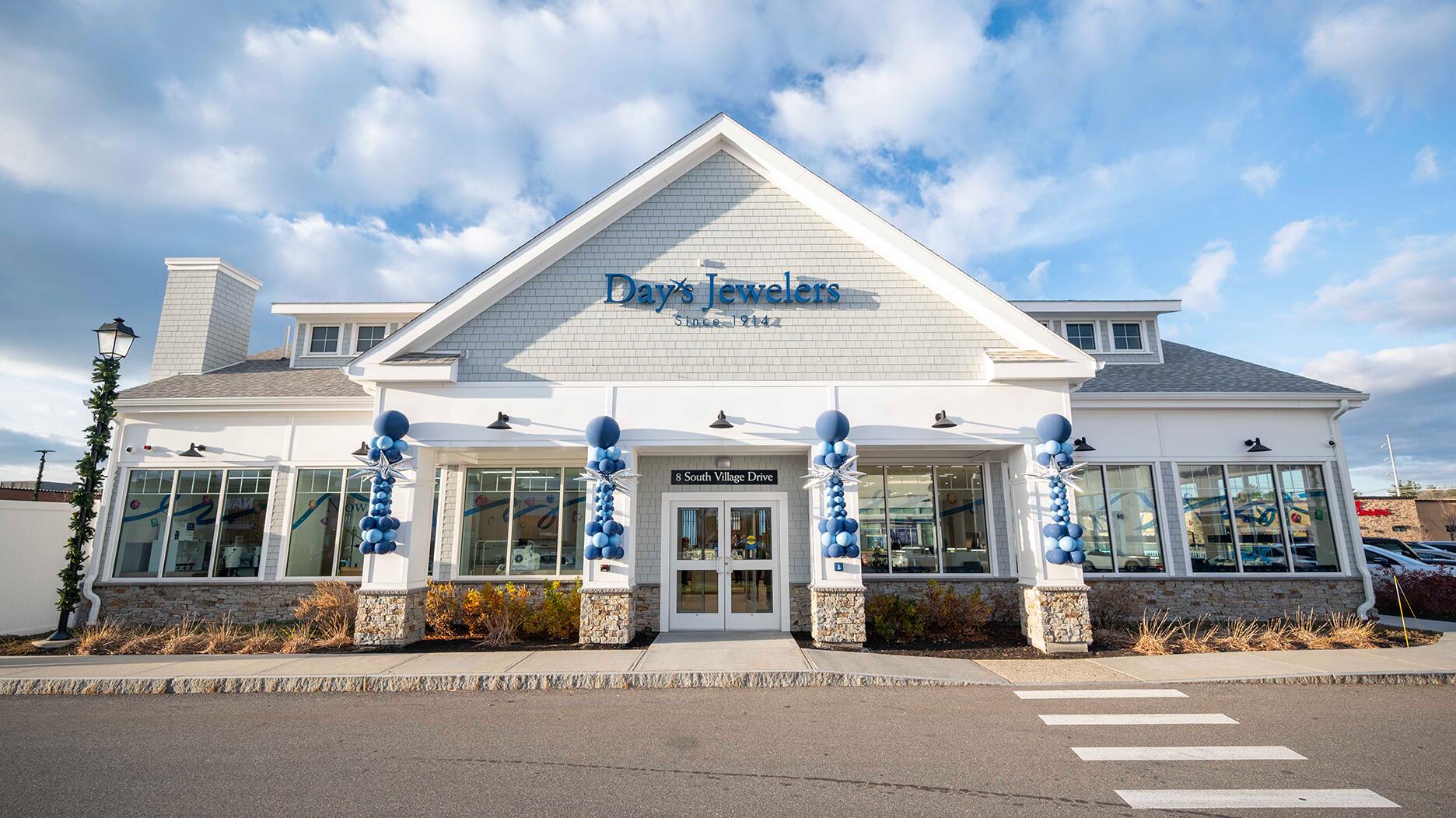The couple pleaded guilty to concealing at least $127 million in cash transactions at its precious metals businesses.
The Rebirth of Brother Wolf
How a pair of 26-year-old twins from Pittsburgh are reinventing a line of religious jewelry that, they say, has mass potential.

Pittsburgh--It’s a well-worn proverb that patience is a virtue.
But so are a strong work ethic and vision, both of which are possessed by the brother-and-sister team of Jonathan and Lauren Tesauro, who bought and essentially reinvented the Brother Wolf brand.
The Tesauro twins, who are now 26, grew up in the jewelry business. Their parents, Jack and Tina, have owned and operated Chapel Hills Jewelry in Aspinwall, Pennsylvania, a suburb of Pittsburgh, since 1989.
Their story will not sound unfamiliar to many other millennials who are now stepping in to take over their parents’ stores or manufacturing firms.
“As babies, Lauren and I crawled on the floor of all of our parents’ stores,” Jonathan said, noting that Chapel Hills Jewelry had three locations at one point.

Lauren was supposed to go medical school while her twin brother planned to attend law school.
But, a family medical emergency--their mother had a brain aneurysm--in 2013 meant they had to change course. They both canceled their plans for post-college education in order to help their father with the family business while their mother recovered.
“When family business calls,” Jonathan said, “you jump and go.”
While working at Chapel Hills Jewelry, the twins, who were searching for a career path outside of retail, took notice of one line that was a consistently strong performer, and one that both they and their mother believed in--Brother Wolf.
Then owned by a Connecticut woman who wishes to remain anonymous, Brother Wolf was a relatively narrowly distributed line of Catholic-centric religious relics reproduced as pendants, but the Tesauros saw potential for so much more.
Jonathan said they wanted to give the line broader appeal, to expand beyond Catholicism to encompass other religions, and also go beyond specific faith to include pieces that are spiritual in nature but not tied to any one religion. They also wanted to make the line more fashionable.
In 2014, the Tesauros bought the company and spent the next year and a half turning Brother Wolf into a brand: “We always say, ‘We didn’t buy a company,
They began having the dealers, who had been sourcing relics for Brother Wolf for years, broaden their searches.
Located in places like Barcelona, Prague and Israel, these dealers comb churches, temples and antique shops in search of old pins, coins and pendants; they know, the Tesauros said, what type of relics work for the brand.
Once the relics are brought back into the United States, a mold is made of it. It is this first-generation mold that is used to the make the pendants, which are then put on a sterling silver chains, sometimes with 14-karat gold touches and pearl drops.
“We always put that Brother Wolf touch on everything,” Lauren says.
The Tesauros also had proper photography done (high-resolution images, white background) and opened up social media accounts.
By mid-2015, they began opening doors. Today, they have 60 accounts and just added a national sales manager, Tom Byelick. Both Jonathan and Lauren said while there is no ceiling to the number of stores they will open, they will not oversaturate any single market.
When asked about selling online direct to consumers, Lauren answered with a quick no, adding that, “We’re really trying to steer away from that out of respect for our retailers.”
The Tesauros also just moved Brother Wolf’s operations from an 800-square-foot space to a 3,200-square-foot space in Pittsburgh. It is here, in the former Steel City that is expanding rapidly just like the Brother Wolf brand, that all the jewelry is made.
It is also here that the Tesauros trace the history of the relic and assign it a virtue.
Take, for example, one of Jonathan’s favorite pieces, St. Teresa of Ávila (1515-1582), the patron saint of Spain who was a mystic and one of only a few women elevated to the status of Doctor of the Church, a title bestowed on saints of particular importance. Her virtue is charisma.
There’s also St. Cecelia, the patron saint of musicians and poets who is pictured in the relic used for the pendant with her harp. Her assigned virtue is creativity.
And it is in these virtues that lies the strength of Brother Wolf, and the reason Jonathan and Lauren saw so much potential in the line.
Each piece has a great story behind it that people can connect with, whether they want to wear the pendants as an amulet of protection, a nod to their profession or in memory of a loved one.
And that is one of, if not the, single most important elements of selling jewelry--eliciting genuine emotion.
“We always say, ‘A jewelry store is like a bar, you always hear everybody’s story,’” Jonathan said. “Wait until you have Brother Wolf in your store; you’re really going to get to know that person.”
The Latest

Consumers shared concerns about prices, inflation, tariffs, trade, and politics in the survey’s write-in response section.

In February 2026, the auction house will move its headquarters to the former Steinway Hall, a neoclassical landmark on Billionaires’ Row.

How Jewelers of America’s 20 Under 40 are leading to ensure a brighter future for the jewelry industry.

The new show will take place Jan. 23-25, 2026.


The former BHP Billiton leader and Gemfields chairman is remembered for his influential leadership throughout his 50-year mining career.

The LVMH-owned brand has partnered with the costume design union to revamp its award for 2026.

Roseco’s 704-page catalog showcases new lab-grown diamonds, findings, tools & more—available in print or interactive digital editions.

The luxury titan inked a deal to acquire an initial minority stake in the jewelry manufacturer with a pathway to full ownership by 2032.

The company’s curation of unsigned vintage and estate jewelry debuted at the Bloomingdale’s in Costa Mesa, California.

In the recent multi-shipment seizure, CBP also found counterfeit Audemars Piguet, Moncler, and Chrome Hearts items.

Helzberg’s Chief Retail Officer Mitch Maggart shared details about its tests of a new store concept rooted in an elevated luxury experience.

Jewelers of America execs and National Jeweler editors discuss tariffs, the sky-high gold price, and the engagement that broke the internet.

The luxury goods company said founder Ippolita Rostagno will remain at the brand’s helm.

Laura Burdese, who joined the Italian luxury brand in 2022, will take on the role in July.

The National Jeweler editors revisit the most noteworthy industry happenings and design trends from 2025.

Need a gift for the cat lover who has everything? Look no further than our latest Piece of the Week.

It purchased the “Grosse Pièce,” an ultra-complicated Audemars Piguet pocket watch from the ‘20s, for a record-breaking price at Sotheby’s.

The lab-grown diamond grower now offers custom engagement and fashion jewelry through its Kira Custom Lab Jewelry service.

Chandler got his start at Michelson Jewelers and has served as DCA president and CEO since 2001. He will retire at the end of the month.

The boutique is slated to open this week inside Terminal 8, offering pre-owned Rolex watches and more to international travelers.

Sponsored by Digital Monitoring Products

The special-edition egg pendant ingested in a New Zealand jewelry store was recovered after a six-day wait.

Associate Editor Natalie Francisco plays favorites with Piece of the Week, selecting a standout piece of jewelry from each month of 2025.

The “Love and Desire” campaign is inspired by the magic that follows when one’s heart leads the way, said the brand.

Two awardees will receive free tuition for an educational course at the Swiss lab, with flights and lodging included.

Berta de Pablos-Barbier will replace Alexander Lacik at the start of January, two months earlier than expected.































